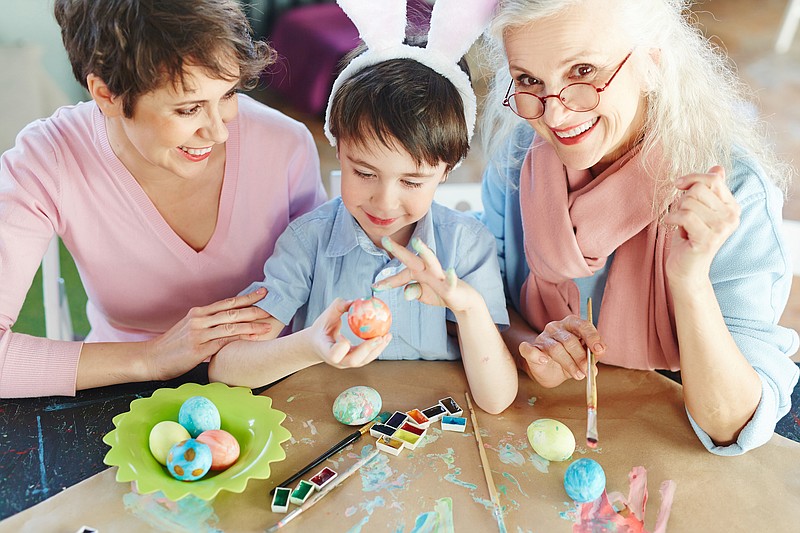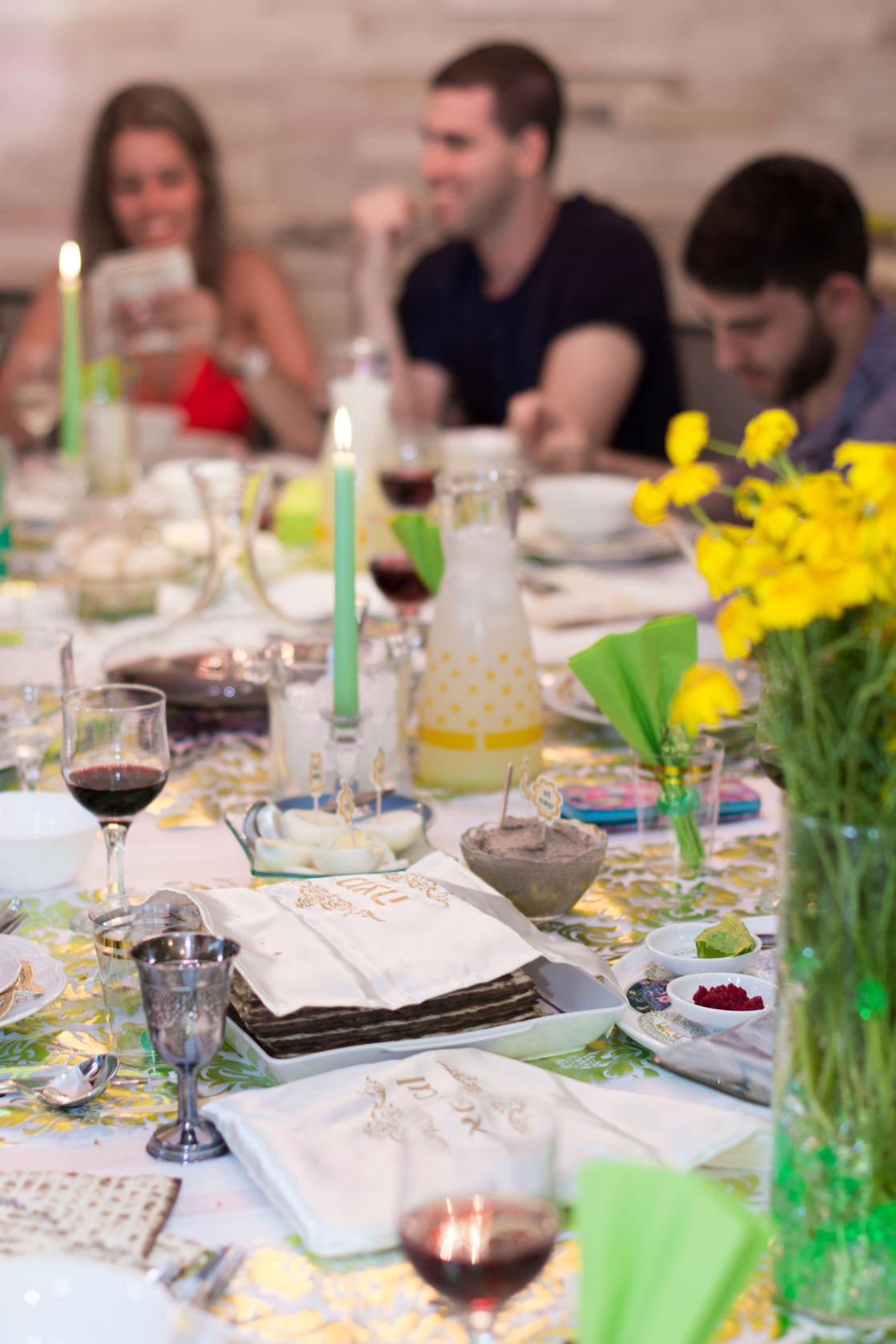Jews and Christians alike will observe religious holidays this weekend. With eggs as a fixture in both celebrations, Stop Foodborne Illness, a national nonprofit health education organization, is reminding cooks of the need for safety precautions.
Passover, which begins Saturday, is the major Jewish spring festival that commemorates the liberation of the Israelites from Egyptian slavery. Passover seders (ceremonial meals) typically include a hard-boiled egg course. Many recipes for Passover, which is also known as the "feast of unleavened bread," call for eggs or egg whites, which take the place of yeast and other leavenings.
Easter, on Sunday, is the most important and oldest festival of the Christian Church, celebrating the resurrection of Jesus Christ. Though often associated with the folkloric depiction of the Easter Bunny, Easter eggs also have religious symbolism. In Orthodox and Eastern Catholic churches, Easter eggs are dyed red to represent the blood of Christ. The eggs' hard shell symbolizes the sealed tomb of Christ, the cracking of which symbolizes his resurrection from the dead.
With eggs, it's not just the cracks that can cause trouble. According to Stop Foodborne Illness, the common bacterium salmonella can be found in unbroken, uncooked eggs and be present on both the outside and the inside of eggs.
Typical symptoms of salmonella food poisoning are nausea, vomiting, diarrhea, cramps and fever, lasting at least a couple of days. Susceptibility and severity are generally associated with babies and young children, the elderly, pregnant women and others with compromised immune systems. However, anyone can get ill from salmonella. Severe cases can be life-threatening.
Egg safety
» Always choose clean and fresh eggs. When purchasing eggs, open the carton and make sure they're clean and intact.
» Handle with care. Chickens can harbor salmonella without showing any signs of being sick, so all unpasteurized eggs - even those that are fresh, organic or unbroken - can contain salmonella. Buying in-shell pasteurized eggs reduces that risk.
» Wash your hands thoroughly. Everybody, including children, must wash their hands with soap and water before and after handling eggs - which includes prepping, cooking, cooling, dyeing, hiding and hunting them.
» Be smart with Easter eggs. Decorating eggs for the holiday is a joy, but do it safely by using only food-safe dyes. Use care when hiding eggs outside or in. The total time for hiding and hunting eggs should not exceed two hours. Avoid areas where eggs would come in contact with pets, wild animals, birds or lawn chemicals. Eating eggs that have been on the ground is not recommended. Don't hide cracked eggs because bacteria could contaminate the inside. Cracked eggs should never be used. A good alternative is to use plastic Easter eggs for the hunt and save the real eggs for eating.
» Refrigerate, refrigerate, refrigerate. Your eggs should be kept at 40 degrees or below. Safely storing and cooking your eggs before consumption is important. When storing eggs, make sure they go inside the fridge, not the fridge door. Once hard-cooked, refrigerated eggs can be stored for up to one week. Eggs can be out of refrigeration for two hours (when it's under 90 degrees) and still be safe to eat. Colored eggs being used as decoration (for several hours or days) should not be eaten. Even though eggs will show signs of spoilage (taste, smell, appearance) when they're past the "best by" date, the agency does not recommend using this as an indicator of an egg's safeness - mainly because eggs that harbor salmonella taste, smell and appear exactly the same as "normal" eggs. Again, eggs should be eaten or refrigerated within two hours after cooking, and do not eat eggs that have been left at room temperature for more than two hours.
» Avoid cross-contamination and cook eggs thoroughly. Using soap and water, wash your hands and all surfaces that may have had contact with raw eggs. This includes countertops, pots and pans, utensils and dishes. Don't let in-shell eggs, raw whites or yolks cross-contaminate foods that will be eaten raw.
» Cook thoroughly. Eggs should be cooked until the egg white and yolk are firm. A lightly cooked egg with a runny yolk increases your chance of pathogenic contamination. If a recipe calls for lightly cooked eggs, it's best to use pasteurized egg products. Dishes with eggs in the recipe must be cooked to a safe internal temperature of 160 degrees.
The Safest Way To Boil Eggs
According to Deirdre Schlunegger, chief executive officer of Stop Foodborne Illness, when cooking hard-boiled eggs, place a single layer of eggs in a saucepan. Cover the eggs with at least 1 inch of water. When the water is at a full boil, remove the pan from the heat source and let the eggs stay in the water between 12 and 18 minutes, depending on the size of the eggs. After the eggs have set for the appropriate amount of time, run cold water over them. When the eggs are cooled enough to handle, put them in the refrigerator.
Safety tips for other spring holiday foods
» Ham: If your Easter ham is prepared with a fresh, uncooked ham, be sure to cook it to an internal temperature of at least 145 degrees and allow the ham to rest for a few minutes before serving. Always avoid cross-contamination from countertops, knives, dishes and pots and pans. Do not let the uncooked ham come into contact with foods you will eat raw.
If you purchase a precooked Easter ham, which can be served cold or heated, be sure to reheat leftovers to at least 140 degrees before serving.
» Beef brisket: This popular Passover dish needs to be cooked for a long time because the cut is less tender. Preferably, set the oven temperature to 350 degrees and no lower than 325 degrees. Place the brisket fat side up. The brisket should be almost covered with water, and the cooking pan should be lidded. Brisket should be cooked for about one hour per pound of meat to a safe temperature of 145 degrees. Avoid cross-contamination from the uncooked meat.
» Lamb: Another popular dish for Easter and Passover, lamb should be cooked to an internal temperature of at least 145 degrees. Let it rest a few minutes before serving. As always, avoid cross-contamination with uncooked meat and juices.
Be smart with leftovers
Making a little extra is almost a given at holiday time, as is taking home goody bags. Just remember to keep food safety in mind. Here are some tips for handling leftovers.
» Make an educated guess as to how much food you will need on the table, then refrigerate the leftovers.
» Prepared foods should not sit at room temperature for more than two hours.
» Put leftovers in air-tight containers for travel.
» For an extra-nice touch, purchase insulated bags and ice so that leftovers can stay ice-cold during your guests' drive home.
» Remind your guests to put the goodies in the refrigerator as soon as they get home.

